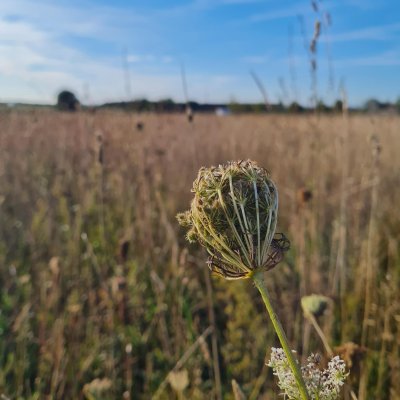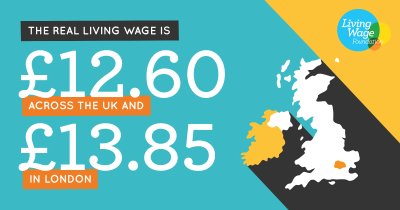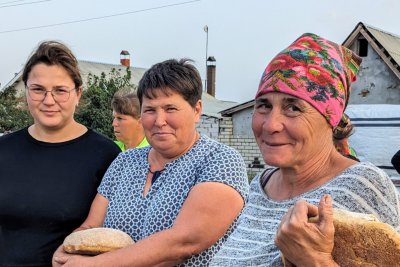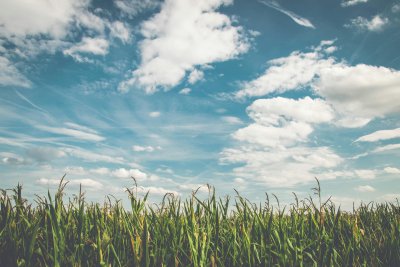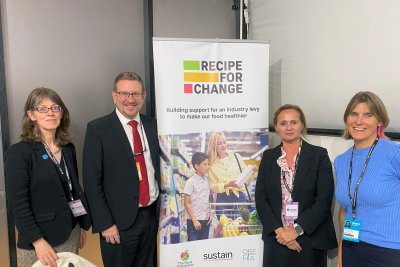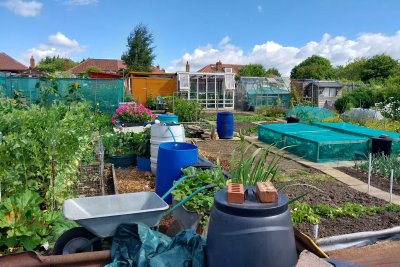We'd love to hear what you think of a public sector meat allowance - let us know here
In November, the Government published a 10-point plan for cutting greenhouse gas emissions, but with zero mention of food and farming which is a jaw-dropping omission given that our food system is one of our biggest sources of emissions and the main driver of biodiversity loss. Just a week later, Sustain’s own research showed that hardly any local councils have included food and farming in their climate emergency declarations or action plans either. This comes at a time when scientists are warning that we must urgently cut food-related emissions to have any hope of meeting the Paris climate change target of keeping warming below 1.5 degrees.
The food and farming priorities for climate and nature – our life support system – are clear. We must eat much less meat and dairy, and the livestock products we do buy must be from environmentally friendly and high welfare systems. We must replace this with more and healthier plant-based food – fruit, veg, wholegrain foods and pulses. We must radically reduce food waste and the economic, structural and practical causes of that waste. We must make it easier, fairer and more profitable for farmers and suppliers to adopt climate- and nature-friendly practices. And we must set about this in a practical and determined way.
Easy to say, but what about those practicalities? This article looks specifically at reducing the consumption of meat and dairy. It focuses on public sector catering because there is great potential to specify standards and lead by example, and where Sustain and our alliance members have years of experience of catalysing change, at scale.
For example, the Sustain alliance has worked over the past decade to transform the market for sustainable fish, and I have coordinated this work for the past six years. In 2009, we set out with the modest aim of winning sustainable seafood standards for the London 2012 Olympic and Paralympic Games. We built this into a strategy and campaign to win significant changes in policy and practice. In 2020, we have hit a truly remarkable milestone – foodservice companies and public sector caterers serving over 1 billion meals per year have now adopted our standards for verifiably sustainable fish, and these standards have also been written into national and local policy by the government and public sector institutions. The biggest foodservice wholesaler Brakes has also signed up, shifting supply chain expectations for good. This demonstrates that lasting change is possible and at vast scale. What can we learn from this, to fast-track significant reduction in meat and dairy?
Ditch the complex carbon calculators
The first thing to be clear about is that the greenhouse gas numbers show we must eat much LESS meat and dairy overall. All has a hefty claw, trotter or hoof-print. Some are marginally better than others in climate terms, but simply switching between different types of meat whilst maintaining the same volume of consumption will not get us the scale of greenhouse gas savings we need. We must also avoid simplistic acts such as demonising beef and promoting industrialised chicken fed on soya - it can lead to bad headlines, upset farmers, chefs and customers, and perverse environmental and welfare outcomes.
We must also recognise that practical ways to reduce meat and dairy may suit some types of setting, and not others. For example, many schools now run popular Meat Free Mondays as a regular educational and cultural learning opportunity; but a commercial catering kitchen might lose regular custom if it does the same. Different settings will need different solutions.
‘LESS’ is also a relative word. Chefs and procurement officers may rightly ask, ‘Less than what?’, ‘How will I know when I’ve reduced enough?’ and ‘How do I know how much meat or dairy each of my customers is eating?’ Researchers, NGOs and carbon-calculator advocates love these kinds of questions, but chefs and food procurement officers are generally too busy to add calculations to their busy workload.
Globally, meat consumption needs to be slashed by up to 90%. For the UK a 50% reduction is proposed by the Eating Better Alliance. Many public sector catering associations have already signed up to ‘20% less but better meat’ commitment, with the ambition to move to 50% reduction over time. At the moment, Brits eat on average 950g of meat per week – halving this would be 425g per week, or about 70g per day; a daily allowance equivalent to roughly 1.5 sausages or 5 slices of ham.
Put cooks and chefs in charge
Catering is characterised by seasonal variability and last-minute substitutions that can send detailed measurement into disarray, rendering carbon calculators impractical. It’s also tempting to get tied up thinking about how you could measure exact proportions of different foodstuffs for an ‘ideal’ plate of food. However, in real life, this is not how we eat – nor how chefs prepare delicious menus from an array of fresh ingredients.
We therefore propose a simple approach that would allow cooks, chefs and product developers to use their skills within clear climate-friendly bounds. It would be adaptable to different settings and make sense in a busy kitchen or procurement process. Sounds like magic? Read on.
Most kitchens or foodservice outlets know how many people or meals they serve (how many ‘covers’). A simple approach would be to calculate the daily or weekly allowance for that number of people overall, and then leave it to the chefs and menu planners to work out how to use the allowance well.
For example, a kitchen feeding 100 people for all their meals could serve 7kg of meat on average per day, spread across the week in whatever way they think best. They could adopt ‘meat free Monday’; choose to use their allowance on serving bacon butties; encourage more people to choose vegetarian options through pricing and attractive promotion; or redesign dishes to use some meat, but add more non-meat protein and vegetables as well. The point is that foodservice professionals know their customers best, and the types of menu options that will work. And there are now plenty of great ingredients, resources, marketing advice and behavioural insights to help foodservice professionals make meat reduction, meat-free, vegetarian and vegan food attractive and profitable.

Top tips for less and better meat menus: Friends of the Earth's 'Kale Yeah' toolkit helps caterers incentivise and promote more sustainable dishes. The One Planet Plate project from the Sustainable Restaurant Association contains a library of over 2000 recipes with low-or-no meat, and check out five top tips from proveg - one of the businesses supporting the Public Sector Catering #20percentlessmeat campaign
Don’t forget the ‘better’
When LESS meat is served, there is space, budget and creativity for using BETTER meat that supports decent farming and animal husbandry to create delicious and nutritious dishes that people want to eat. BETTER means organic, certified sustainable, free-range and pasture-fed. We must support farming or fishing methods that enable natural behaviours, prioritise animal health and welfare and environmental protection, and which guarantee good antibiotics stewardship. Institutions sometimes argue that higher quality meat and dairy is too expensive, but if we buy less, then we can afford better.
Make ‘less meat’ standard
It is common for people to say that public sector procurement must ‘lead by example’. On critical issues such as climate change and antibiotics stewardship, it is now imperative to do so. Part Two of the National Food Strategy in spring 2021 promises a chapter on using public sector food procurement to set the principles and pace of change. Here is what we think should happen, and soon:
- Update Government Buying Standards (covering Whitehall, HM Prisons and parts of the armed forces), to include a requirement for less but better meat and dairy and only verifiably sustainable fish. Guidance on increasing the proportion of plant-based food and healthy fruit, vegetables, pulses and wholegrain foods would also be helpful.
- Make these a legal requirement across the public sector, with mandatory reporting and meaningful sanctions for non-compliance. Require measurement and reporting in simple terms of average daily consumption per customer head of meat and dairy.
- Require that all meat, dairy and eggs purchased in the public sector meets high environmental and welfare standards, and that all fish is verifiably sustainable.
- Enable and favour higher welfare and agro-ecological livestock farmers and sustainable fishers to access public sector contracts, through systems such as dynamic procurement; and require that high standards are given preferential weighting in tendering processes and contract awards. Require public sector institutions to treat farmers and fishers fairly, and to pay promptly.
- Support the PS100 initiative to reduce meat and dairy by 20% and help them push this to 50% by supporting foodservice professionals make the transition, through training, advice, marketing support, recipes, high-profile chef engagement, awards and other forms of positive recognition.
- Engage commercial foodservice companies in the process, and invite them to join in with the innovation, to build the movement for change. Ask them to provide cost, sales and volume data – especially in relation to their public sector contracts – to enable well-informed monitoring and decision-making. Lack of transparency has so far been a significant barrier to change.
Action on food and climate has overwhelming public support. A more sustainable food system would be better for our health and the planet and could deliver good jobs. I have witnessed through my work on sustainable fish just how well foodservice businesses adapt to changing eating trends and to public sector standards for health, quality and sustainability. Chefs and caterers are impressive innovators, and suppliers develop new product ranges when they can be confident that demand is there.
We are living in an era of climate and nature emergency: Let’s use public sector food procurement to show how to achieve a delicious, healthy and planet-friendly diet, for the benefit of everyone.
What do you think of this suggestion? Let us know - we're gathering feedback to help inform how this campaign progresses
Find out more about Sustain's work on the Climate and Nature Emergency
Climate Change and Nature: Sustain has taken a keen interest in the rapidly accumulating evidence about the effect of food and farming on climate change and nature, as scientific evidence emerges that our food system is a very significant contributor to greenhouse gas emissions and biodiversity loss.
